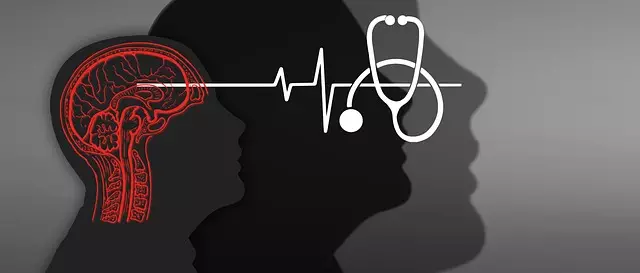Evaluating Kaiser's inpatient mental health programs in Golden requires a multi-faceted approach combining quantitative surveys (like BDI, GAD-7) and qualitative methods (focus groups, interviews). Key areas include readmission rates, long-term recovery outcomes, patient feedback on staff support, and the impact of therapeutic interventions. Their holistic approach emphasizes patient-centered care, cultural sensitivity, and evidence-based treatments tailored to individual needs, fostering positive thinking and inner strength for optimal mental health recovery.
Mental wellness program evaluations are crucial for understanding the effectiveness and impact of treatments. This article explores various methods used to assess the success of inpatient mental health programs, focusing on strategies employed by leading healthcare providers like Kaiser. We delve into their approach, from traditional evaluation techniques measuring treatment outcomes to innovative patient-centered assessment tools and data analytics integration. Discover how these methods help improve care, enhance patient engagement, and identify at-risk individuals, ultimately revolutionizing mental health support.
- Assessing the Effectiveness of Inpatient Mental Health Programs
- – Overview of Kaiser's approach to inpatient mental health care
- – Common evaluation methods for measuring treatment outcomes
Assessing the Effectiveness of Inpatient Mental Health Programs

Evaluating the effectiveness of inpatient mental health programs is a multifaceted process, especially for renowned healthcare providers like Kaiser. While patient satisfaction surveys and clinical outcome measures are essential tools, they don’t tell the whole story. A comprehensive assessment should delve into specific areas such as readmission rates, recovery outcomes measured over time, and patient feedback on staff support and therapeutic interventions received during their stay.
Looking beyond quantitative data, qualitative research through focus groups and interviews with patients can offer valuable insights into their experiences. This includes understanding the impact of program components like group therapy sessions, individual counseling, and self-care routine development, which are often integral parts of the Mental Wellness Podcast Series Production aimed at Anxiety Relief and fostering overall well-being. By examining these aspects, healthcare organizations like Kaiser can continuously improve their inpatient mental health programs to better serve those in need.
– Overview of Kaiser's approach to inpatient mental health care

Kaiser has been recognized for its comprehensive approach to inpatient mental health care, focusing on holistic healing and recovery. The organization prioritizes patient-centered treatment, where each individual’s unique needs are addressed through a blend of medical, psychological, and social interventions. This method ensures that patients not only manage their current symptoms but also develop strategies for long-term well-being. By fostering an environment that promotes positive thinking and inner strength development, Kaiser aims to equip individuals with the tools necessary to navigate life’s challenges effectively.
Cultural sensitivity in mental healthcare practice is a cornerstone of Kaiser’s philosophy. They understand that cultural background significantly influences an individual’s experience and perception of mental health issues. Therefore, their inpatient programs are designed to be culturally responsive, respecting diverse beliefs and values while providing evidence-based treatments tailored to each patient’s context. This approach has been shown to enhance treatment outcomes and foster a deeper sense of connection between patients and their care teams.
– Common evaluation methods for measuring treatment outcomes

In evaluating mental wellness programs, particularly those offered by large healthcare organizations like Kaiser with inpatient mental health services, several common methods are employed to measure treatment outcomes. Quantitative assessments, such as standardized questionnaires and surveys, play a pivotal role in gauging changes in symptoms and overall functioning among participants. These tools help track improvements or deteriorations over time, allowing for data-driven insights into the program’s effectiveness. For instance, measures like the Beck Depression Inventory (BDI) or the Mental Health Clinical Evaluation (MHCE) are frequently used to assess depression levels, while anxiety and stress are often evaluated using scales like the Generalized Anxiety Disorder 7-Item Scale (GAD-7).
Beyond quantitative methods, qualitative evaluations offer a deeper understanding of participants’ experiences. Interviews and focus groups facilitate open dialogue about strengths, challenges, and perceived benefits of the program. This approach, often coupled with participant self-reflection journals, provides valuable insights into the mechanisms behind positive changes. By combining these evaluation techniques—quantitative metrics and qualitative feedback—mental wellness programs can refine their strategies, ensuring they effectively address issues like burnout prevention among healthcare providers, foster resilience building, and promote positive thinking in both patients and caregivers.
Kaiser’s comprehensive approach to inpatient mental health care, characterized by its focus on holistic treatment and evidence-based practices, has proven effective in improving patient outcomes. The evaluation methods employed, including measures of clinical symptoms, functional impairment, and patient satisfaction, provide a robust framework for assessing the success of these programs. By continually refining these assessment strategies, Kaiser ensures that its inpatient mental health services remain responsive to evolving needs, ultimately fostering better mental wellness outcomes for patients.






